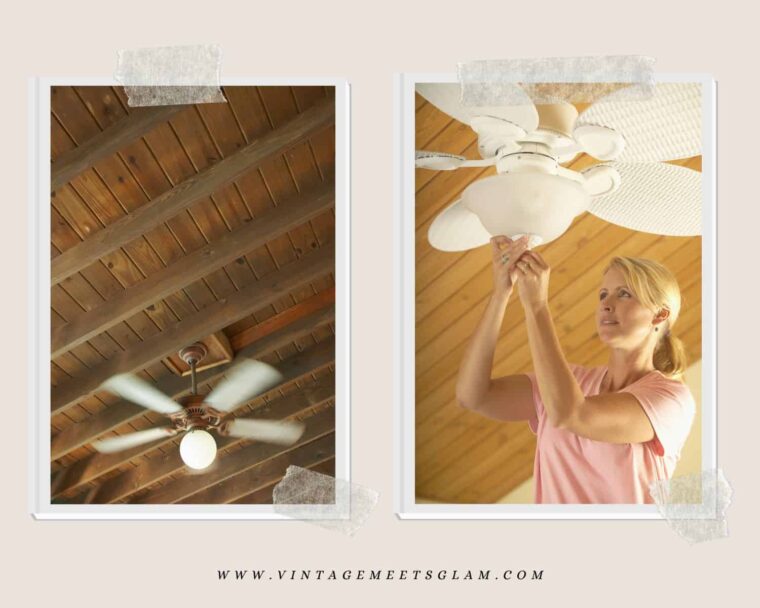Ceiling fans have been around for a while, first coming onto the scene in the mid-1800s. Since then, they’ve become integral to any home improvement project. There’s a good reason for this. Ceiling fans do a lot for your home and your cooling bills.
But how much do you know about ceiling fans? Are ceiling fans outdated? Do you know how they work? Are there any benefits to installing them? Let’s take a look at some of the most common things about ceiling fans:
Ceiling Fans Are Not Outdated
Ceiling fans are one of the most popular summer cooling forms. They’re easy to install, and they’re relatively low cost. But many people wonder if ceiling fans are outdated and no longer used.
The answer is no, and they are still useful. A ceiling fan can be a great way to keep cool if you have an older home with no central air conditioning. They also add a decorative touch to any room in your house that doesn’t have enough windows for natural light and fresh air.
However, if you have central air conditioning and don’t need to ventilate your home during the warmer months, installing a ceiling fan is probably not worth installing.
How Do Ceiling Fans Work?
A ceiling fan is a rotating device that circulates air within a room or building. Ceiling fans are often installed in homes, offices, and other buildings to aid cooling and air circulation.
Ceiling fans are typically suspended from the ceiling by two or three chains or wires, affixed with a hook or hanger bracket. A fan’s motor is located in the unit’s base, which can either be mounted directly to a joist or hung from the drop-down hook. Most ceiling fans have three blades that rotate counterclockwise when viewed from below by an observer facing the front side of the unit. These blades are attached to a hub on a central shaft that supports them at their center of rotation. Most modern ceiling fans have a built-in light fixture and an adjustable blade pitch mechanism that allows for better airflow direction and velocity control.
The purpose of a ceiling fan is to create a draft to cool down an area by increasing air circulation within it. This is accomplished through rotating paddles, also known as blades, which push air downwards towards the floor, where they bounce back upwards due to gravity before repeating this process.
What Type of Ceiling Fan Should You Install in Your Home?
If you’re thinking of installing a ceiling fan in your home, you may wonder whether you should opt for a modern or traditional style of fan. Well, there are pros and cons to each one.
Modern fans are more expensive than traditional ones but offer more features, such as remote controls and timers. The blades of a modern fan can be angled to direct the airflow where you want it, which is particularly useful if your room has multiple corners or nooks.
Traditional fans are cheaper than their modern counterparts, and they come in a range of styles. However, they don’t offer as many features as modern fans, though some have built-in remote control functionality. There are three main types:
- Axial fans: Axial fans have blades that rotate parallel and blow air straight down. These are the most common type of fans in homes today.
- Tilting-blade fans: Tilting-blade fans have blades that tilt up or down as they spin, so they blow air at an angle instead of straight down. These are often used in rooms with vaulted ceilings because they can blow air farther than axial fans without losing power.
- Bladeless fans: Bladeless ceiling fans don’t use blades at all — instead, they use an oscillating hub that pushes air outwards in a circular pattern instead of blowing it downwards like other types of ceiling fans do.

In What Rooms Should You Install a Ceiling Fan?
There are many rooms where you should install a ceiling fan:
- Kitchen – If you have an open kitchen with no windows, installing a ceiling fan can help improve airflow and circulation throughout the room, which will also help keep it cool during the hot summer months.
- Dining Room – If you have an open dining room that doesn’t have windows, installing a ceiling fan will help circulate air throughout the space and keep it cooler during warmer weather.
- Bedroom – If you live in a hot climate, installing a ceiling fan in your bedroom will help keep the room cool at night when you’re sleeping so that you don’t wake up sweating from being too warm while trying to sleep at night.
Benefits of Ceiling Fans
Ceiling fans have been in existence for thousands of years. However, that doesn’t mean that they are outdated and that their technology and mechanisms haven’t evolved. If you’re looking to purchase a new ceiling fan, you might want to know what the benefits of ceiling fans are.
- Ceiling Fans Can Save You Money
A ceiling fan can help you save up to 30 percent of the energy used to heat or cool your home. It can also reduce the air conditioning you need during hot weather by 10 percent. If you have central air conditioning, a ceiling fan will help reduce the electricity needed to run it.
- Ceiling Fans Are Good for Your Health
A ceiling fan uses less energy than other fans, so it doesn’t take as much power to move the air around in your home. This means that less dust and allergens are spread throughout your house, which makes for healthier living conditions for everyone in your household.
- Ceiling Fans Are Quiet
Most modern ceiling fans are designed with a low-noise motor that makes very little noise when you turn it on. This is especially important if you live in an apartment or condo where sound carries easily between units. Some ceiling fans even come with built-in lights that dim automatically when they sense daylight entering through your windows, so they don’t disturb anyone’s sleep at night or wake anyone up early in the morning.
- They Don’t Necessarily Block the View
If you have a large room with tall ceilings, it can be difficult to find a fan that won’t obstruct your view of the rest of the room. But many modern ceiling fans don’t have blades that extend beyond the top of the motor housing, so there’s no need to worry about blocking an otherwise unobstructed view when looking up from your bed.
- They Keep You Cool During Summer
Summer is always a challenge for people living in tropical countries where mercury levels tend to rise beyond 40 degrees Celsius during summers. Ceiling fans help keep the temperature down by circulating air around the room, creating a pleasant breeze, and reducing sweating, which helps keep you cool at all times (not just during summer). Hence, they help reduce the need for air conditioning which saves money on electricity bills as well as being eco-friendly at the same time.
Conclusion
Ultimately, ceiling fans will never go out of style. The story of ceiling fans is a unique one. They were originally built for practicality, but that practicality evolved over the years into a cultural phenomenon. As technology advances in different areas, from weather systems to living spaces, ceiling fans have maintained their relevance as a key player in home comfort and design. As long as humans still inhabit the earth, there will be a need for ceiling fans.




